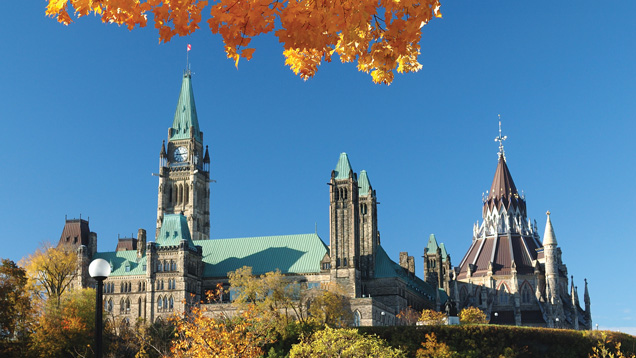The interim
 CREDIT: TONYIANIRO / ISTOCK / THINKSTOCK
CREDIT: TONYIANIRO / ISTOCK / THINKSTOCKCanada is a difficult country to represent because over half of the country's population resides in just 10 metropolitan areas.
Everyone with a job and a few adult beverages in them can probably give you a list of coworkers who, for a variety of reasons, should never have gotten their job. Whether it’s general incompetence or a complete lack of aptitude, there’s a substantial number of individuals who got to where they are by virtue of being in the right place at the right time. Politics is no different, and MPs are constantly seeking to win favour in the form of cabinet appointments.
It’s been just over a week since Prime Minister Justin Trudeau officially took office, and all that politicos are talking about is the new cabinet.
Cue the obligatory transcendent articles about how the new appointments are more token than representative. Ministers are shuffled regularly so there will undoubtedly be an initial learning curve, but after that you can expect to see underachievers getting the old heave-ho.
The new cabinet has been a mixed bag of old and new, but there’s cause for some cautious optimism. Our new Minister of National Defence Harjit Sajjan has actually spent time in the military, so one can only assume that his practical experience will lend itself to the task at hand.
The Harper government was like the 2009 Toronto Maple Leafs; there were some key players, but the majority of the team was there to pass the puck.
Cabinet ministers, like Peter Mackay and John Baird, were Conservative celebrities that could rally the Conservative base.
Other than former leader of the Liberal Party Stéphane Dion, there are only a couple recognizable faces in Trudeau’s cabinet, such as astronaut Marc Garneau who was aptly named to the transportation portfolio.
One troubling aspect of Trudeau’s cabinet is the fact that almost a quarter of the ministers hail from the greater Toronto area. Ontario struggles to represent communities outside of the GTA, and it’s unfortunate to see that paradigm at the federal level as well.
Canada is a difficult country to represent because over half of the country’s population resides in just 10 metropolitan areas.
The issues affecting residents of Oshawa are starkly different than those affecting people who live in Owen Sound. The cabinet must strike a balance between generating policy that will benefit the majority of the population, while finding solutions to accommodate the remainder. There’s almost a month to go until the government will meet in Ottawa again. The interim will be a frenzy of activity, much of which will fly under the radar.
As the cabinet familiarizes themselves with their respective portfolios, Trudeau will continue to court the public’s favour and reciprocally be courted by industry leaders intent on getting a piece of the promised deficit spending.
News recently surfaced that President Barack Obama won’t support the Keystone XL pipeline, a project with billions of dollars in potential investment and job growth for Canada.
Trudeau’s response will be a key indicator of how he plans to drive economic development as prime minister. After spending months on the campaign trail lining up his dominoes, it’s time to see if Trudeau Junior has what it takes to knock them down.
Editorial opinions or comments expressed in this online edition of Interrobang newspaper reflect the views of the writer and are not those of the Interrobang or the Fanshawe Student Union. The Interrobang is published weekly by the Fanshawe Student Union at 1001 Fanshawe College Blvd., P.O. Box 7005, London, Ontario, N5Y 5R6 and distributed through the Fanshawe College community. Letters to the editor are welcome. All letters are subject to editing and should be emailed. All letters must be accompanied by contact information. Letters can also be submitted online by clicking here.














